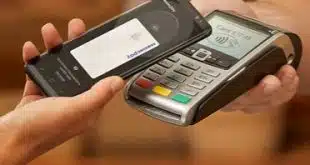How often have you used cash in the last three months?
If you are like many people, the answer is not much. For me, the answer is twice, but more about that in a minute.
With the Covid-19 pandemic sweeping across the world, shoppers and merchants changed their habits as social distancing led to things like shopping and dining going virtual. Even the Federal Reserve quarantined cash coming back from Asia, according to news reports.
This has led some to ask whether cashless societies are near.
While people have asked this question off and on for years, the question has taken on a new urgency in the effort to prevent the spread of the novel coronavirus. The campaign against cash got to the point that Massachusetts Attorney General Maura Healey felt the need to remind the state’s businesses that it was illegal to refuse cash.
In 2019, U.S. cash payments for all purposes totaled about $1.33 trillion, according to a study done by Javelin Strategy & Research for ATM provider Cardtronics. A follow-up online survey in April 2020 found that people were making fewer payments overall, but they were still using cash. Fifteen percent of U.S. consumers said they were using cash in April 2020, compared with 16% in the fall of 2019.
So, the push and pull over cash has intensified, but the real question is what will happen once the social distancing ends.
In the past few months, I’ve used cash twice: once for convenience—tipping a delivery driver—and once because it seemed like the safest option. My wife and I were driving to a curbside pickup from a butcher that didn’t accept online payments. That meant paying in cash or with a card once we got there. It occurred to us that exact change meant we could pay without handling a card machine and an additional receipt.
So we pulled together the bills and coins and handed off the exact amount. It made the transaction smooth, easy, and more contactless than a card transaction would have been.
Contactless payments may be the big winner in the payments shakeout as people look to avoid touching card terminals. In January, Finextra reported on a Deutsche Bank study that predicted cash would hang around, but that cards might be displaced by phones, wearables, and other devices. The pandemic may accelerate this trend as shoppers try to avoid touching terminals.
There is even some evidence that the pandemic could lead to a cash revival of sorts. The town of Tenino, Wash., has started printing a local currency of wooden dollars to help its local businesses stay afloat, according to online news outlet The Hustle. The money is backed by U.S. currency, but the dollars can only be spent in town, which helps the local economy.
Shoppers concerned about their communities have been encouraged to shop local, and as towns, cities, and states continue to reopen, small business might begin encouraging a return to cash as a way to manage payments costs in a pandemic downturn. Shoppers looking to avoid debt in that same downturn may also return to cash as a way of controlling their budgets.
There is another trend that could lead to a return to cash. With talk of contact-tracing apps and health passports, the pandemic has raised new privacy concerns. Javelin’s research found that over half of consumers say that cash protects privacy.
As the world enters whatever the new normal looks like, cash will still have a place in the payments landscape, and may even achieve a higher standing in some cases.
—By Ben Jackson, bjackson@ipa.org





